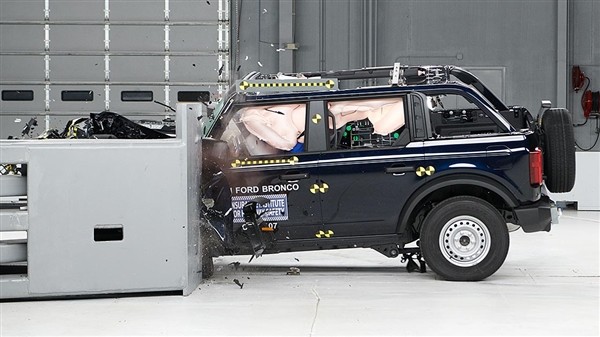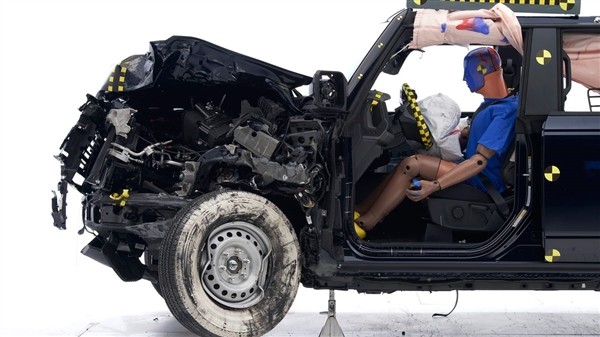Ford Bronco completes IIHS collision
Recently, Ford Bronco completed the US IIHS crash test. From the test results, Bronco's head restraints cannot provide good protection. At the same time, the insufficient lighting of the headlights at the corners is also a major problem.
IIHS is an important part of the world's safety standards and one of the strict automotive safety rating agencies, so it is also regarded as an authority.
Specifically, in the latest IIHS crash test standards, Ford Bronco received good ratings in five evaluations, including 25% front driver side offset collision, 25% front passenger side offset collision, 40% front offset collision, side collision, roof pressure test.
Among them, in a 25% front driver's side offset collision and a 25% front co-driver's side offset collision, the A-pillar of the car was not significantly deformed, and the airbag was also popped out in time.

In the last seat test, Ford Bronco only received a low acceptable rating, because the test dummy’s neck was subjected to abnormal force when simulating a rear-end collision, causing neck injuries.
It is reported that the seat did not provide sufficient support for the head and neck of the occupant when the car was rear-end simulating a stationary vehicle being rear-ended by a vehicle of the same weight at a speed of 32 km/h. In addition, the headlights of the new car have insufficient lighting at the corners.
It is understood that the new Bronco will be based on the upgraded Ford T6 platform, and will share the body frame structure with Ford's new-generation Ranger, using a non-load-bearing beam chassis and four-wheel drive form to ensure its off-road performance.
The car provides a 2.3T inline four-cylinder engine and a 2.7T V6 engine, with maximum power of 274 and 310 horsepower, and peak torques of 420 N·m and 542 N·m, respectively. The entire transmission system is matched with a 10AT gearbox.

Post time:Dec-17-2021
